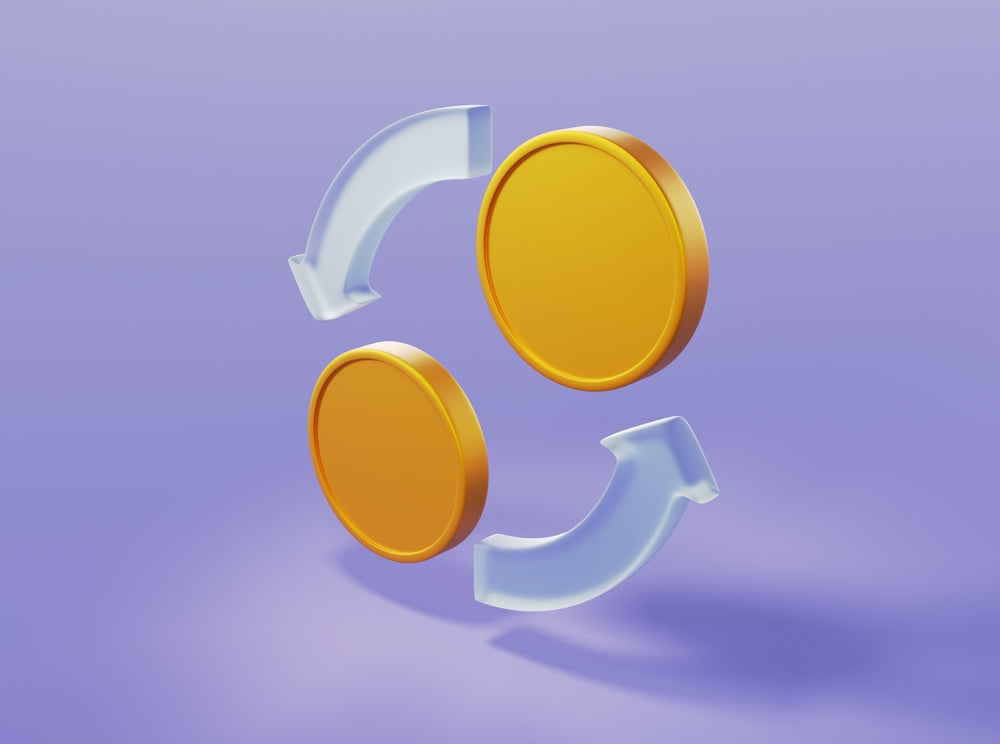
Varför valutakonvertering är viktigt: Öka internationella försäljningen
Share
I dagens globala e-handelslandskap är internationell försäljning inte längre en lyx utan en nödvändighet för tillväxt. Med miljontals potentiella kunder i olika länder måste handlare säkerställa en sömlös shoppingupplevelse för köpare världen över. En avgörande aspekt som påverkar internationell försäljning avsevärt är valutakonvertering. Om din Shopify-butik inte stödjer flera valutor kan du förlora kunder på grund av förvirring, misstro eller oväntade kostnader vid kassan.
I den här artikeln kommer vi att utforska varför valutakonvertering är viktigt, hur det påverkar köpbeslut och det bästa sättet att implementera det i din Shopify-butik för att öka internationell försäljning.
1. Förbättra kundernas förtroende och tillit
Föreställ dig att du handlar online och hittar en bra produkt, men priset är angivet i en okänd valuta. Du kanske undrar hur mycket det faktiskt kommer att kosta dig, vilket leder till tvekan och osäkerhet. Kunder är mindre benägna att slutföra sitt köp om de inte kan se priser i sin lokala valuta.
Genom att erbjuda automatisk valutakonvertering skapar du en transparent shoppingupplevelse som bygger förtroende. När shoppare ser priser i sin bekanta valuta känner de sig mer bekväma och säkra på att genomföra ett köp.
2. Minska antalet övergivna kundvagnar
En av de största orsakerna till övergivna kundvagnar inom internationell e-handel är oväntade kostnader. Om kunder bara ser priser i USD, EUR eller en annan valuta de inte använder kan de lämna kassaprocessen för att manuellt konvertera priset. Detta extra steg stör köpprocessen och ökar sannolikheten att de överger sin kundvagn.
En funktion för valutakonvertering i realtid eliminerar detta problem genom att visa rätt pris direkt, vilket säkerställer en smidigare kassaprocess och minskar risken att förlora en försäljning.
3. Öka konverteringsgraden
En sömlös shoppingupplevelse korrelerar direkt med högre konverteringsgrad. Om en shoppare inte behöver oroa sig för växelkurser, dolda avgifter eller valutafluktuationer är de mer benägna att slutföra sitt köp.
Forskning visar att konsumenter föredrar lokaliserade shoppingupplevelser. Att visa priser i kundens lokala valuta tar bort en stor friktion och gör köpprocessen enklare, vilket ökar försäljningen för din Shopify-butik.
4. Undvik prischock och dolda avgifter
När kunder handlar i en annan valuta kan de bli överraskade av den slutliga avgiften på sitt kreditkort på grund av bankens växelkurser eller konverteringsavgifter. Om de upplever oväntade extra kostnader kan de inte bara överge sitt köp utan också förlora förtroendet för din butik.
Att erbjuda valutakonvertering i realtid säkerställer att shoppare ser det slutgiltiga priset direkt, vilket hjälper till att hantera deras förväntningar och förbättra kundnöjdheten.
5. Få en konkurrensfördel
I den konkurrensutsatta e-handelsvärlden kan små fördelar göra stor skillnad. Om dina konkurrenter redan erbjuder lokaliserade priser medan din butik bara visar priser i en valuta kan kunder välja dem framför dig.
Genom att implementera automatisk valutakonvertering jämnar du ut spelplanen och säkerställer att din butik förblir konkurrenskraftig på den internationella marknaden.
6. Expandera till nya marknader med lätthet
Global expansion kan verka skrämmande, men rätt verktyg gör det mycket enklare. Valutakonvertering är ett av de viktiga stegen för att nå internationella kunder utan behov av komplexa backend-ändringar eller manuella justeringar.
Med AI-drivna verktyg som Transtore kan du omedelbart konvertera priserna i din Shopify-butik till lokala valutor baserat på kundens plats. Denna automatisering förenklar internationell försäljning och låter dig fokusera på tillväxt istället för tekniska svårigheter.
7. Sömlös kassa och betalningshantering
En väloptimerad kassaprocess är avgörande för konverteringsgraden. Om en kund ser ett pris under hela sin shoppingresa men debiteras ett annat belopp vid kassan skapar det en dålig användarupplevelse och kan avskräcka dem från att slutföra köpet.
Genom att integrera en valutakonverterare som synkroniseras med Shopify Payments säkerställer du att kunder ser konsekventa priser från produktval till betalning, vilket minskar förvirring och frustration.
8. Förenkla shoppingupplevelsen
Ju enklare det är för kunder att bläddra, jämföra och köpa produkter, desto mer sannolikt är det att de handlar. Att ta bort onödiga steg—som att manuellt konvertera priser—förbättrar shoppingupplevelsen och uppmuntrar fler köp.
En sömlös och problemfri shoppingupplevelse bygger kundlojalitet och ökar återkommande köp, vilket gör valutakonvertering till en avgörande del av din e-handelsstrategi.
Så lägger du till automatisk valutakonvertering i din Shopify-butik
Att implementera en valutakonverterare på Shopify behöver inte vara komplicerat. Det bästa sättet att säkerställa korrekt, realtidskonvertering är att använda en pålitlig app som Transtore.
Varför välja Transtore?
- AI-driven översättning & valutakonvertering – Översätter automatiskt din butik och konverterar priser i realtid.
- Geolokaliseringsbaserad prissättning – Upptäcker kundens plats ner till land och region och justerar priser därefter.
- Sömlös kassaintegration – Fungerar med Shopify Payments för att säkerställa konsekvent prissättning.
- Användarvänligt gränssnitt – Lätt att installera utan teknisk expertis.
Genom att installera Transtore eliminerar du hinder för internationell försäljning, skapar en lokaliserad shoppingupplevelse och ökar din butiks globala försäljning utan ansträngning.
Avslutande tankar
Valutakonvertering är inte längre valfritt för Shopify-handlare som vill expandera globalt—det är en nödvändighet. Genom att erbjuda kunder realtidspriser i deras lokala valuta kan du öka förtroendet, minska övergivna kundvagnar och förbättra konverteringar.
Med verktyg som Transtore är det enkelt och effektivt att lägga till valutakonvertering i din Shopify-butik. Redo att ta din internationella försäljning till nästa nivå? Installera Transtore idag och börja sälja globalt med lätthet!
